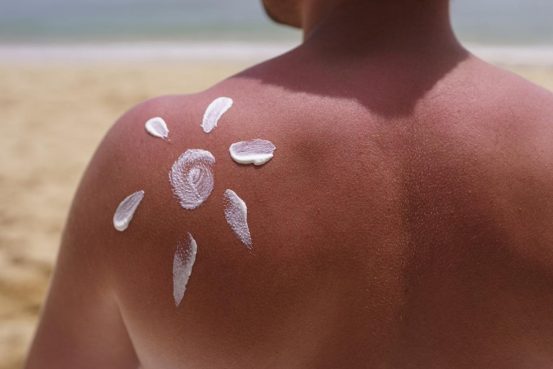
As customers come to be significantly savvy about skin care, the argument in between chemical and physical sun blocks continues to be a hot subject. While both offer crucial security versus the sun's dangerous ultraviolet (UV) rays, physical sun blocks are usually lauded for their gentle yet reliable solution, making them a recommended selection for those with delicate or reactive skin. The trick to their success depends on their active components, which produce a physical obstacle on the skin to shut out UV radiation. This article will certainly delve into the globe of physical sun blocks, focusing on their key components: zinc oxide and titanium dioxide.
Unlike their chemical counterparts, which take in UV radiation and transform it into warmth, physical sun blocks work by sitting on top of the skin to create a shield that disperses and scatters both UVA and UVB rays. This system is why they are typically referred to as "sunscreens." The primary benefit of this method is its instant efficiency upon application and the reduced possibility of creating skin irritability, as the ingredients are not soaked up right into the skin.
One of the most renowned active ingredient in the physical sunscreen family members is Zinc Oxide. This powerhouse mineral is one-of-a-kind in its capability to offer broad-spectrum security, indicating it properly protects the skin against the full spectrum of UVA and UVB rays. UVA rays are responsible for early aging, consisting of wrinkles and great lines, while UVB rays are the key cause of sunburn. By providing thorough defense versus both, zinc oxide plays an essential role in avoiding sun damage and decreasing the risk of skin cancer cells.
Additionally, zinc oxide is renowned for its relaxing residential properties. It has actually been utilized for centuries to deal with small skin irritations, breakouts, and burns, a testimony to its gentle nature. This makes sunscreens created with zinc oxide a suitable selection for people with sensitive skin, acne-prone skin, or problems like rosacea and dermatitis. Its non-comedogenic homes additionally imply it is much less likely to obstruct pores, a typical issue for those with oily or combination skin.
The various other principal in the physical sunscreen group is Titanium Dioxide. This naturally occurring mineral is an additional superb active ingredient for producing a physical barrier versus UV rays. It is highly efficient at reflecting and spreading UVB radiation, supplying durable protection against sunburn. While it uses good defense across the UVB spectrum, it is typically thought about much less effective against long-wave UVA rays contrasted to zinc oxide.
For this reason, titanium dioxide is typically used combined with zinc oxide in sunscreen solutions. This combination develops a collaborating impact, boosting the total broad-spectrum defense of the product. By leveraging the strengths of both ingredients, formulators can produce a sunscreen that provides extensive and trusted defense against the sunlight's destructive rays. Like zinc oxide, titanium dioxide is likewise gentle on the skin and is physical sunscreen ingredients an appropriate choice for those with sensitive or easily irritated skin.
Over the last few years, improvements in formula innovation have addressed among the initial downsides of physical sun blocks: the thick, white actors they would certainly usually leave on the skin. Modern formulas now make use of micronized or nano-sized particles of zinc oxide and titanium dioxide, which permits a more cosmetically classy application without jeopardizing their protective capacities. This implies you can enjoy the gentle, reliable protection of a physical sun block without the telltale white deposit.
To conclude, physical sunscreens offer a reputable and gentle method to protect your skin from the sunlight. Their celebrity active ingredients, zinc oxide and titanium dioxide, operate in harmony to produce a physical guard that disperses hazardous UVA and UVB rays. With their superb safety account and suitability for all skin types, specifically delicate skin, physical sunscreens are a formidable force in the fight against sunlight damage. The next time you are Surf the sun block aisle, consider the powerful, protective, and skin-loving benefits of a physical formula.